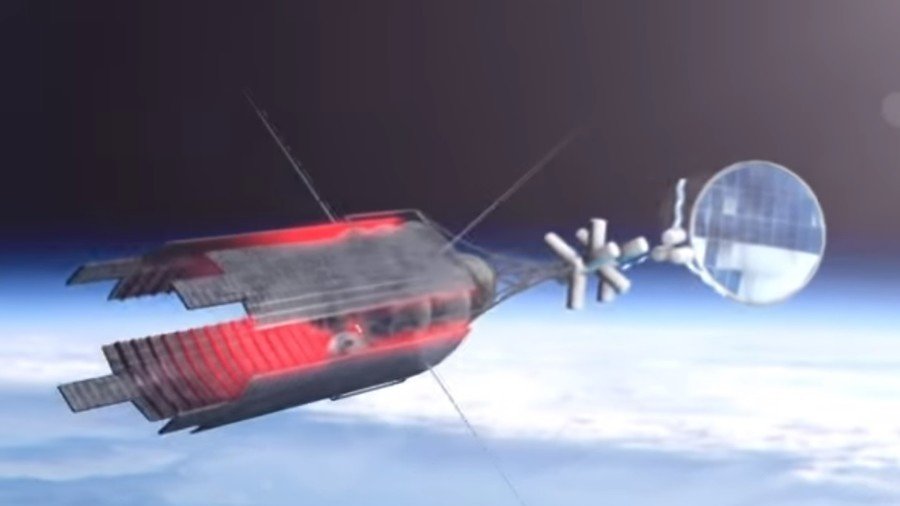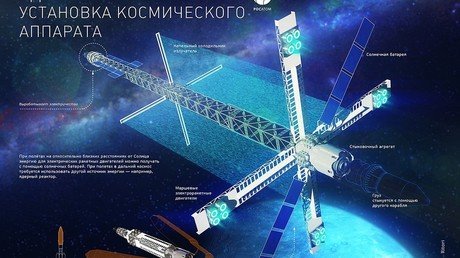‘Unlike us, Elon Musk is using old tech’: Russia shows off reusable NUKE ENGINE for Mars mission

A leading Russian space research center has posted a video of its nuclear-powered rocket, that will be able to land on Mars after seven months, and can be re-launched into space just 48 hours after landing.
“A mission to Mars is possible in the very near future, but that’s not an aim in itself. Our engines can be the foundation for a whole range of space missions that currently seem like science fiction,” Vladimir Koshlakov, who heads Moscow’s Keldysh Research Center told Rossiyskaya Gazeta.
The institute, which is famous for developing the Katyusha rocket launched during World War II, has been working on what it says is a “unique” propulsion system since 2009. From past descriptions, it comprises a gas-cooled fission reactor that powers a generator, which in turn feeds a plasma thruster.
Various nuclear reactors were deployed in space by both the Soviets and NASA between the 1960s and the 1980s but, although Koshlakov has refused to name a date for when the new engines will be ready, he says they “will surpass the existing level of technological and scientific development.”
“Reusability is the priority,” said Koshlakov, himself a scientific researcher, specializing in heat transfer and mathematic modelling, “We must develop engines that do not need to be fine-tuned or repaired more than once every ten flights. Also, 48 hours after the rocket returns from space, it must be ready to go again. This is what the market demands.”
READ MORE: Musk promises 1st ‘up-and-down flight’ for SpaceX Mars rocket next year
Questioned on whether he might be beaten to the punch by foreign companies, particularly more agile private corporations such as Elon Musk’s SpaceX, which is planning its own mission to Mars, Koshlakov was unconcerned.
“Elon Musk is using the existing tech, developed a long time ago. He is a businessman: he took a solution that was already there, and applied it successfully. Notably, he is also doing his work with help from the government,” concluded Koshlakov.
Subscribe to RT newsletter to get stories the mainstream media won’t tell you.














